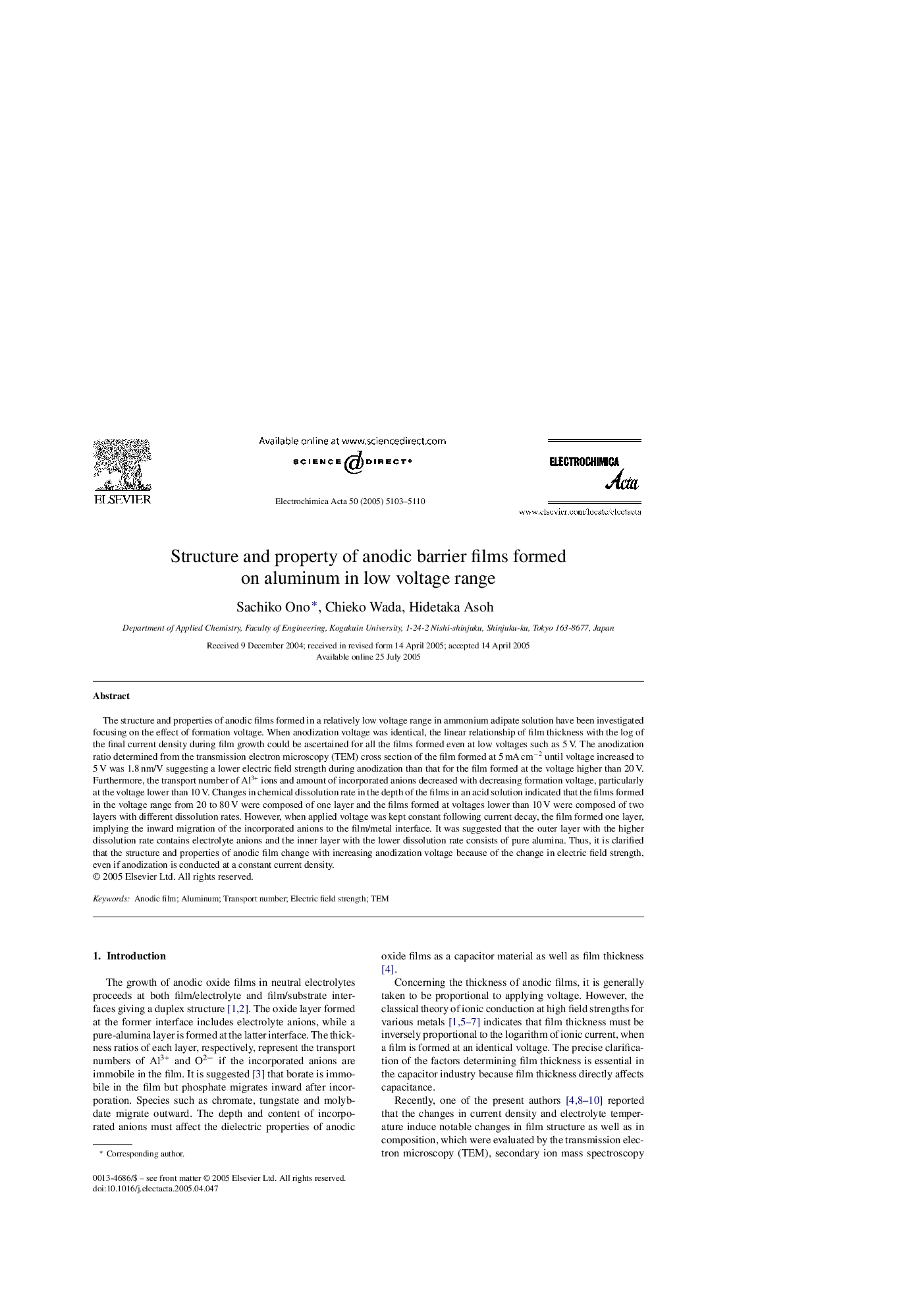| Article ID | Journal | Published Year | Pages | File Type |
|---|---|---|---|---|
| 197035 | Electrochimica Acta | 2005 | 8 Pages |
The structure and properties of anodic films formed in a relatively low voltage range in ammonium adipate solution have been investigated focusing on the effect of formation voltage. When anodization voltage was identical, the linear relationship of film thickness with the log of the final current density during film growth could be ascertained for all the films formed even at low voltages such as 5 V. The anodization ratio determined from the transmission electron microscopy (TEM) cross section of the film formed at 5 mA cm−2 until voltage increased to 5 V was 1.8 nm/V suggesting a lower electric field strength during anodization than that for the film formed at the voltage higher than 20 V. Furthermore, the transport number of Al3+ ions and amount of incorporated anions decreased with decreasing formation voltage, particularly at the voltage lower than 10 V. Changes in chemical dissolution rate in the depth of the films in an acid solution indicated that the films formed in the voltage range from 20 to 80 V were composed of one layer and the films formed at voltages lower than 10 V were composed of two layers with different dissolution rates. However, when applied voltage was kept constant following current decay, the film formed one layer, implying the inward migration of the incorporated anions to the film/metal interface. It was suggested that the outer layer with the higher dissolution rate contains electrolyte anions and the inner layer with the lower dissolution rate consists of pure alumina. Thus, it is clarified that the structure and properties of anodic film change with increasing anodization voltage because of the change in electric field strength, even if anodization is conducted at a constant current density.
